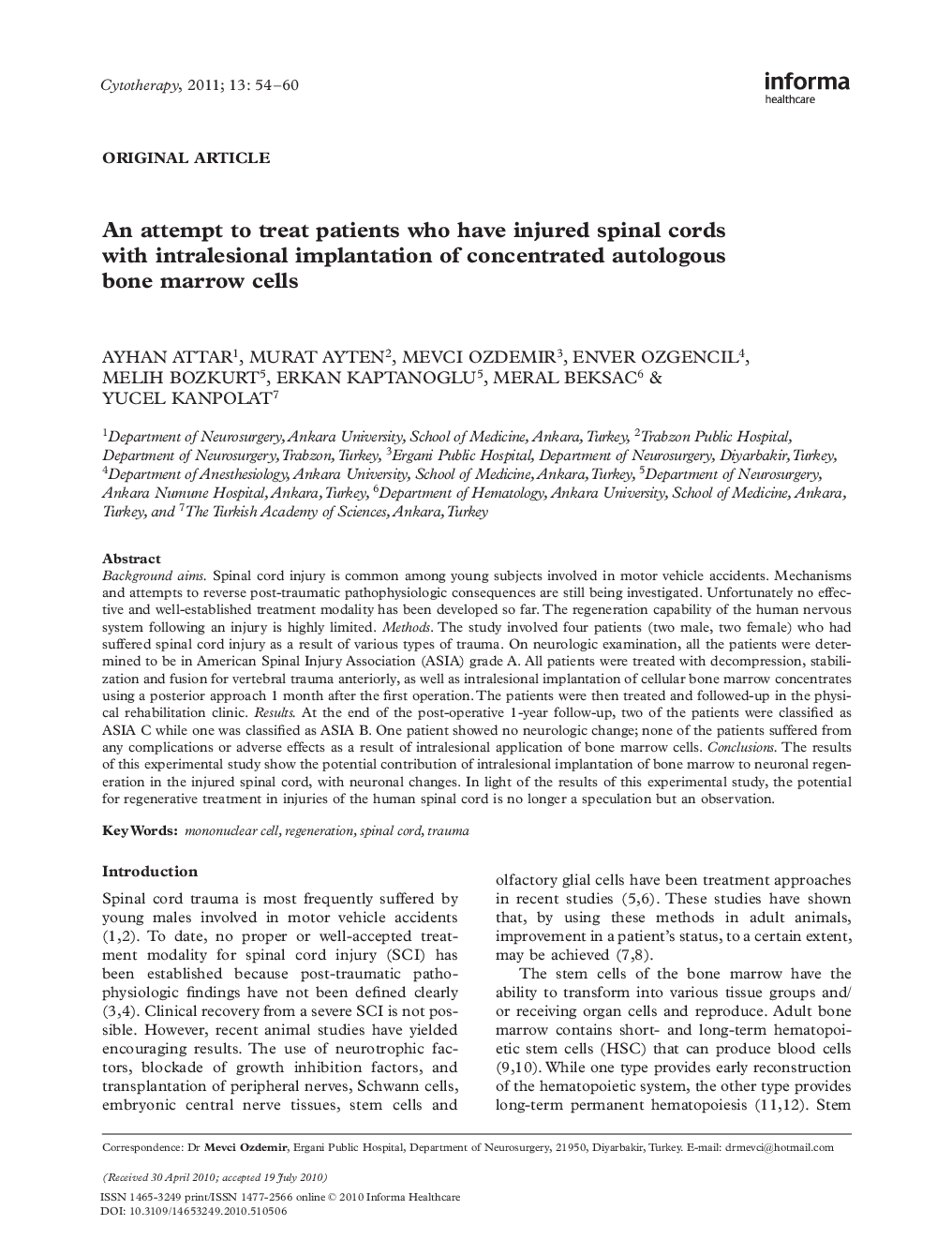| Article ID | Journal | Published Year | Pages | File Type |
|---|---|---|---|---|
| 2171888 | Cytotherapy | 2011 | 7 Pages |
Background aimsSpinal cord injury is common among young subjects involved in motor vehicle accidents. Mechanisms and attempts to reverse post-traumatic pathophysiologic consequences are still being investigated. Unfortunately no effective and well-established treatment modality has been developed so far. The regeneration capability of the human nervous system following an injury is highly limitedMethodsThe study involved four patients (two male, two female) who had suffered spinal cord injury as a result of various types of trauma. On neurologic examination, all the patients were determined to be in American Spinal Injury Association (ASIA) grade A. All patients were treated with decompression, stabilization and fusion for vertebral trauma anteriorly, as well as intralesional implantation of cellular bone marrow concentrates using a posterior approach 1 month after the first operation. The patients were then treated and followed-up in the physical rehabilitation clinicResultsAt the end of the post-operative 1-year follow-up, two of the patients were classified as ASIA C while one was classified as ASIA B. One patient showed no neurologic change; none of the patients suffered from any complications or adverse effects as a result of intralesional application of bone marrow cellsConclusionsThe results of this experimental study show the potential contribution of intralesional implantation of bone marrow to neuronal regeneration in the injured spinal cord, with neuronal changes. In light of the results of this experimental study, the potential for regenerative treatment in injuries of the human spinal cord is no longer a speculation but an observation.
